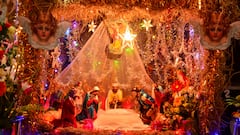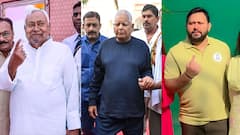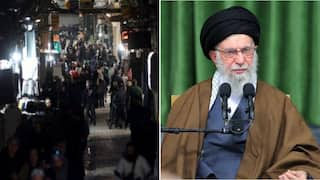'Nabanna Abhijan' Vs 1993 Writers' Building March: TMC Points Out Difference In Police Action
The Nabanna Abhijan rally in Kolkata, which was held to demand justice for a murdered doctor, reminded the city of Mamata Banerjee's march to Writers' Building in 1993. Read to know why.

The BJP and the Trinamool Congress in Bengal are engaged in a bitter battle over the 'Nabanna Abhijan' rally and the violence that followed. Protesters from across Kolkata sought to march to the state secretariat, Nabanna, to demand "justice" for the RG Kar Medical College and Hospital junior doctor, who was raped and murdered on the hospital's premises on August 9. And amid the political bickering, the grim incident of July 21, 1993.
The rally, named 'Nabanna Abhijan', however, did not get permission from the state government. Subsequently, the police set up barricades on the Howrah bridge on the way to Nabanna, to prevent the march. However, the protesters pulled down the barricades and stormed through them. Despite the police's warnings, the protesters continued their march, resulting in a skirmish between the two sides.
ALSO READ | Nabanna Abhijan: Stone-Pelting, Tear Gas, Water Cannon — And TMC-BJP War Of Words
The police resorted to lathicharge and firing tear gas shells. Police personnel, too, sustained injuries as the protesters hurled stones. Amid the massive unrest, the BJP and the TMC traded blames, accusing each other of "orchestrating the protests". While the BJP said that the state government was using the police to suppress protesters, the TMC accused BJP of bringing in "outsiders" to fan chaos and anarchy in Bengal. TMC's Kunal Ghosh pointed out: "The police showed exceptional restraint in handling the situation. Those who are claiming police high-handedness must not forget the 1993 protests."
So, what happened in 1993 and how is the situation different now?
1993 Bengal Protests and Kolkata Firing Incident
The 1993 Bengal protests were sparked by allegations of electoral rigging in the 1991 Bengal assembly elections. The Left Front, led by the CPI-M had won a massive mandate, with 245 of the 294 seats.
The protests continued for nearly 1.5 years. On July 21, 1993, Mamata Banerjee, who was the Youth Congress president back then, led a march to the iconic Writers' Building in Kolkata, then the Bengal secretariat.
The protesters demanded that voter cards be made mandatory to ensure free and fair elections. However, they were accosted by the police about a kilometre away from the Writers' Building.
The administration also imposed movement restrictions around the secretariat by issuing a Section 144 order.
One group of protesters was being led by Mamata Banerjee, while another group broke through the police cordon around 11 AM. This is when a junior officer of the Calcutta Police allegedly ordered his troops to open fire at the protesters.
Thirteen protesters were killed that day in police firing. Mamata Banerjee was also injured in the incident.
ALSO READ | BJP Calls On Public To Observe 12-Hour 'Bengal Bandh' Against RG Kar Doctor's Rape & Murder
Tushar Talukdar, who was the city police commissioner back then, said that he was not even aware of the incident and said he would "look into it".
The incident buoyed Mamata Banerjee into the national limelight as she gained public support and sympathy for her defiance of the state. Around three-and-a-half years later, she broke away from the Congress with a band of her loyal followers and formed the All India Trinamool Congress (TMC).
State Reaction Then Vs Now
The CPI-M dispensation led by CM Jyoti Basu supported the police action on July 21, 1993, against the Writers' Building protest, saying that the police had done the right thing by preventing a takeover of the Writers' Building.
The TMC on Tuesday (August 27, 2004), too, supported the police action, saying that the cops showed immense restraint by not firing against the protesters despite being at the receiving end of stone-pelting and rod attacks.
On both occasions, the ruling parties claimed that the police acted only when the protesters crossed the demarcated line of prohibition.
However, the stark difference in the police action is the use of live bullets in 1993, which were fired directly at the torso and not the legs as per the set protocol. In the 'Nabanna Abhijan' protests, the police put up barricades. When the protesters broke through the barricades, the police resorted to lathicharge. As the protests became even more violent, the police fire water canons and tear gas shells to disperse the crowd.
Related Video
Astrology Forecast 2026: Astrology Forecast Flags Health, Power Challenges for Trump in 2026s





































